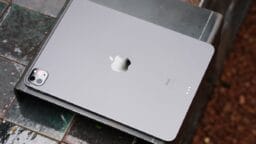Apple’s latest operating system, iOS 26, unveils a radical design paradigm known as “Liquid Glass.” This novel aesthetic boasts heightened transparency, translucency, fluidity, and sheen. However, to label the reception of Liquid Glass as divisive would be an understatement; reactions range from fervent admiration to utter discontent, leaving many users, including myself, dismayed by the new interface and its diminished functionality on updated iPhones and iPads.
While Liquid Glass dazzles in Apple’s polished marketing visuals, the reality presents a different narrative. Users grapple with diminished contrast, congested user interface elements, and overlapping text. The overall readability suffers as excessive animations and clunky transitions obscure functionality, while icons appear distorted or misaligned.
The resultant experience has left many disillusioned, stirring conversations among iPhone and iPad users about the possibility of disabling this intrusive interface entirely in iOS 26.
A contingent of users advocates for the reinstatement of a “Classic” iOS 18 aesthetic for those who value accessibility and user-friendliness, yet such an option seems unlikely to materialize. In the interim, a few adjustments can mitigate some of the most extreme changes brought forth by Liquid Glass.
Note: For those contemplating an upgrade to iOS 26, it is crucial to recognize that Apple’s glamorous screenshots do not accurately convey the nuances of the Liquid Glass interface. If concerns related to legibility and usability are paramount, it may be prudent to forgo the update and remain with iOS 18.7, exercising caution when considering future updates.
I personally regret my upgrade to iOS 26 but remain committed to navigating this intricate interface, determined to share insights with others who find themselves similarly vexed by Liquid Glass.
If your device already runs iOS 26 or iPadOS 26 and you are struggling with the new visual framework, I have compiled a list of recommendations below to enhance legibility and functionality.
8 Strategies to Enhance Legibility & Usability in iOS 26
Adjusting several accessibility settings can significantly improve the iOS 26 experience, though these options may be less effective than their predecessors, particularly features like “Increase Contrast” and “Reduce Motion.”
1: Activate Reduce Transparency for Enhanced Clarity
- Navigate to Settings > Accessibility > Display & Text Sizes > Reduce Transparency > ON
2: Engage, Increase Contrast to Mitigate Blurry Translucency
- Navigate to Settings > Accessibility > Display & Text Sizes > Increase Contrast > ON
3: Enable Bold Text to Bolster Text Readability
Due to the reduced contrast, even with the Increase Contrast feature activated, utilizing Bold Text can markedly enhance text visibility within iOS 26.
- Navigate to Settings > Accessibility > Display & Text Sizes > Bold Text > ON
4: Activate Button Shapes for Distinct Visual Cues
- Navigate to Settings > Accessibility > Display & Text Sizes > Button Shapes > ON
5: Turn On/Off Labels for Greater Clarity
- Navigate to Settings > Accessibility > Display & Text Sizes > On/Off Labels > ON
6: Disable Excessive Motion and Animations
A hallmark of iOS 26 is the abundant and often jarring screen animations, which can impede performance even on high-specification devices. To alleviate these issues:
- Navigate to Settings > Accessibility > Motion > Reduce Motion > ON
7: Enable Prefer Crossfading Transitions to Minimize Motion
- Navigate to Settings > Accessibility > Motion > Prefer Crossfade Transitions > ON
8: Personalize Home Screen and Icon Aesthetics
- Long-press on the Home Screen of your iPhone, then tap on “Edit” > Customize
- Explore customization options, including Default (Light), Dark, Clear, Tinted, and additional settings available for each
How Can I Prevent Text Overlapping in iOS 26?
If you’ve observed overlapping or compressed text since the iOS 26 upgrade, you are certainly not alone. Regrettably, beyond reducing text size, options to address this issue are scarce.

Many users prefer larger text for enhanced visibility on smaller iPhone screens, but with iOS 26’s Liquid Glass design, contrast is severely compromised, rendering text increasingly challenging to decipher.
Additionally, the smaller and more compact text areas result in overlapping characters that not only appear awkward but are also difficult to read.
Liquid Glass Detractors Must Experiment to Find Solutions
Ultimately, those who find the Liquid Glass interface unappealing—or outright frustrating—will need to invest considerable effort into tweaking various settings to tailor the experience to their preferences. The redesign manages to be both subtly transformative and overtly disruptive, a feat that Apple has paradoxically achieved.
If you prudently backed up your device before diving into iOS 26, consider downgrading to iOS 18 for a respite. Unfortunately, I did not make such provisions, leaving me to navigate the complexities of iOS 26 while persistently advocating for improvements in forthcoming updates.
What are your thoughts on Liquid Glass in iOS 26 for iPhones and iPadOS 26 for iPads? Do you adore this transformation? Or do you find it frustrating? Would you prefer the option to disable Liquid Glass entirely while retaining the features of iOS 26 alongside the traditional iOS 18 layout?
Source link: Osxdaily.com.






